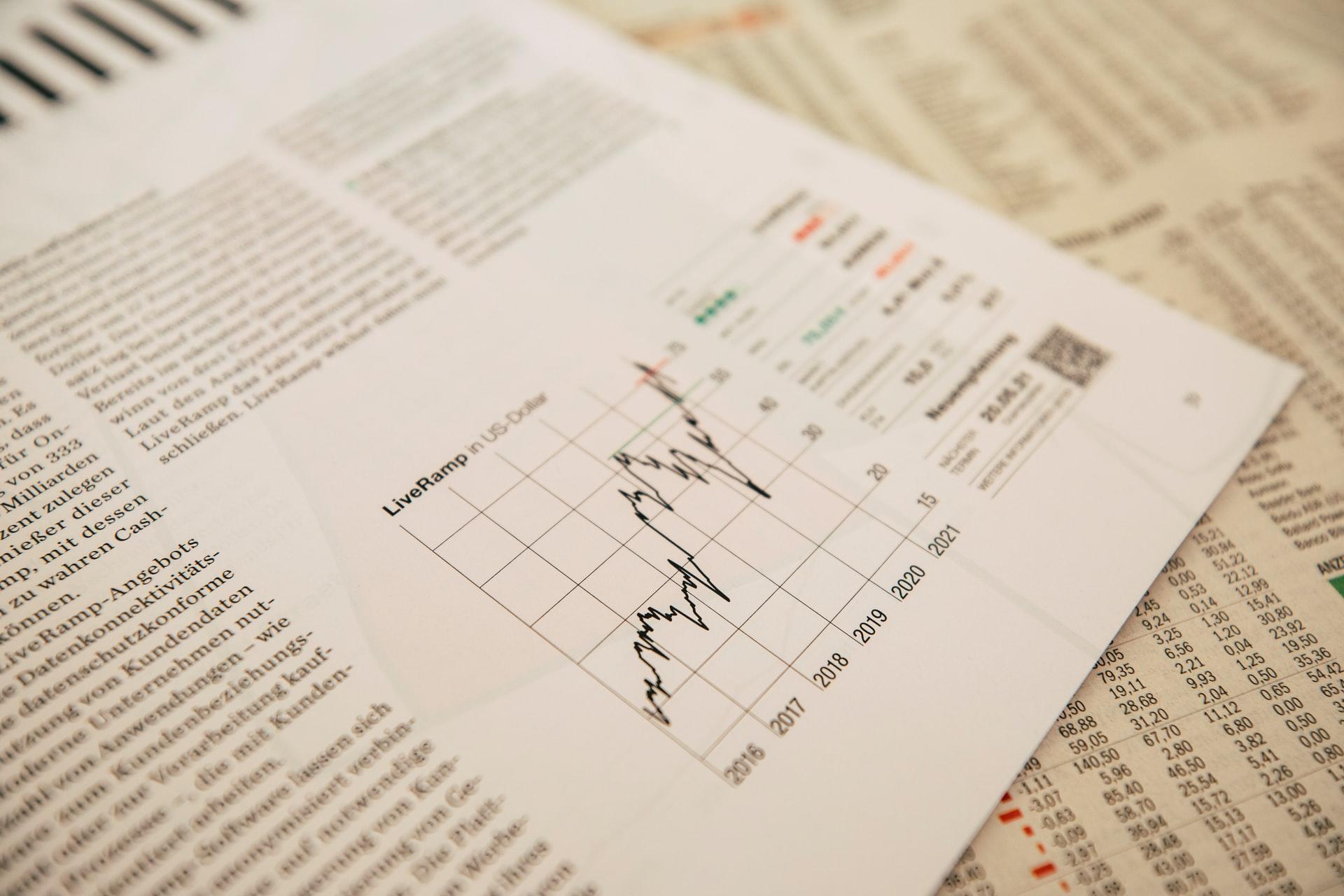For most people, finance represents two discrete concepts: their cash, assets and liabilities, and some vague, slightly awe-inspiring discipline that's far too convoluted to know everything about. As it turns out, they're absolutely right. As the saying goes, money makes the world go 'round. But it doesn't operate as an uncontrolled and uncontrollable force.
Money is a human invention. We created everything from the tokens for trading to the ways they can be used. We're constantly designing new financial instruments to make the use of money more diversified. And, as new technologies are invented, we come up with yet more innovative ways to make money work for us.
That requires management. Money management, to be sure, but more specifically, managing areas of finance. Those include:
- personal finance
- corporate finance
- government finance - also called public finance
- managing investments
- risk management
- financial engineering
You might know a bit about the first three areas of finance. Those concepts brush up against our daily lives, if not dictate them outright. Less well-known to the average person are the last three types of finance. These are the domains of people with fat, diversified portfolios who could afford financial loss but do their utmost to not incur any. Drawing a parallel to gambling: the first three bullets are slot machines and low-stakes poker games. The three we investigate today are the high rollers' tables.

Understanding Assets
Before we can explain what assets are, we have to make a distinction between money and currency. The terms are not synonymous even though we use them interchangeably. Currency is cash: the coins you have in your piggy bank and the bills you fold into your pocket. Currency has no intrinsic value and its worth doesn't grow the longer you keep it. Currencies are unique to each country, both in appearance and value.

Money, by contrast, is not something you can hold in your hands. It represents the true value of the things we spend our cash on. Money stores value; the longer you keep a 'money item' - an asset, the more valuable it becomes. Money and currency are both assets but not of the same class.
Let's say you buy a few shares in some exciting new tech startup. The cash you parted with ceases to matter - currency is always transient, but that stock you bought is money. If the startup succeeds, your stock becomes more valuable. If it fails... well, that's what risk management is about. More on that later, though.
Stocks and bonds are assets. Real estate is an asset. Derivatives, futures and options are assets. Any type of financial contract is an asset. Debt- and equity-based financial instruments are also assets. Some financial instruments can be assets and liabilities at the same time. Loans fall into that category.
It's not enough to build a diverse portfolio and then just let it be. All of these assets must be managed according to how they behave in markets whose conditions change frequently, for any number of reasons. Explaining these financial systems is the subject of another article. For now, all we need to know is that asset management is a hands-on, full-time job.
Managing Assets
In this article's introduction, we alluded to mysterious fat cats with lots of money who indulge in high-stakes gambling to increase their wealth. Asset management is vital to that type of investor, obviously, but it's just as necessary for companies that manage pension funds, charities, insurance firms and corporations to manage their portfolios.
You've surely heard the old saying "Never put all your eggs in one basket"? It sums up what asset management is all about. A well-diversified portfolio includes assets from different classes. Some high risk and others slow-growing, some stable and others volatile; some high-yield and others low-yield. All of these different types of assets are selected according to investor policies. For instance, an environmental charity wouldn't want its finance manager to buy stock in environmentally damaging enterprises on their behalf.

Investor profile matters a great deal when it comes to managing assets. For instance, a retirement mutual fund might favour low-to medium-risk investments. Examples of such include stocks in companies with a solid reputation that have stood the test of time and look set to continue performing. They may also include a few high-risk funds to offer investors more diversity. Conversely, investors who can afford to take bigger risks may want a greater proportion of their portfolio to be high-risk investments for bigger returns.
Given an investor's limitations and objectives, every investment manager's goal is selecting the best investments - what's called portfolio optimisation, Keep in mind that this is not a 'buy it and forget it' proposition. Assets must constantly be reviewed to make sure they're suited to the clients' investment goals and personal convictions. But that's only half of the job.
Financial statements must be constantly reviewed and assessed. Investment managers have to make sure the portfolio's performance meets the client's stated goals and fulfils the terms of the contract (for expected returns, growth percentage and so on). Likewise, these managers must monitor the money markets' health because a downturn or shock could affect the assets' performance. Finally, they must constantly evaluate each asset in relation to the investor's criteria and market performance.
Managing Risks
If an asset fails to perform as expected, it puts the entire portfolio at risk. Investment managers have to work quickly to assess the situation. What's causing the asset to fail? A bit of bad press is enough to cause a company's stock to lose value but the dip may only be temporary (think: Tesla shares after Elon's Twitter debacle). More serious instances - proof of corruption, mismanagement or customer dissatisfaction are all urgent causes for concern for money managers.
They don't launch frenetic public relations campaigns to counter negative messaging; that's a different department's job. Their task is to continuously monitor clients' portfolios and assess risks in case such a devastating scenario plays out. Should an asset management team conclude that they must purge an offending company's stock, they have to have several options, similar in value and quality, to replace it. This is called market risk.
Risk isn't only about averting disaster, though. It's also about finding areas where investors can afford to take a chance - on an untested stock, a new venture or in normal operations, that won't hurt their bottom line. Each time a bank makes a loan, it is taking credit risk. Bankers manage such risks by verifying that the borrower has a good history of debt repayment and has the means of repaying a debt.
Operational risk, the third leg of financial risk management, covers every other type of failure. External events that have nothing to do with financial management - say, the war in Ukraine or crop failure due to drought are operational risks. People can cause such risks; imagine a factory's production crew on strike. Computer systems crashing at a bank, a catastrophic failure in a manufacturing concern, a supply shortage... All of these are operational risks that must be managed and they all touch on the three partitions of finance.

Quantitative Finance
In our companion article on financial theory, we discuss mathematical finance; an advanced level of finance study that requires complex mathematical models. Quantitative finance is another name for mathematical finance. This highly specialised area of finance finds heavy usage in risk management, particularly in banking.
Have you ever used the phrase 'hedging your bets'? It means taking a chance on something while keeping a safety layer between you and failure. Banks, corporations and investors hedge their bets all the time; it's what risk management is all about. Quantitative finance uses mathematics to model risk. For instance, a lending institution might want to model credit risks when market conditions and external factors like inflation are not particularly good for lending.
Quantitative analysis is used to stress-test financial instruments' ability to withstand even minor economic quakes. Rather than make projections based on current performance and conditions, financial managers expose a financial instrument to a series of possible events and model the results. As it would have a cascading effect on every area of finance, a hike in oil prices beyond a certain percentage is an oft-modelled event. Market crashes, the gross domestic product (GDP) falling below a certain per cent and high unemployment are other types of phenomena financial instruments are tested against.
One reason COVID caused such financial and economic turmoil is that an event wherein unemployment skyrockets, production plummets, GDPs worldwide contract and catastrophic climate events happening simultaneously defied risk management standard practices.
Using mathematical finance to assess and manage risk in finance is a growing field. In the Ireland, the Central Bank of Ireland regulates financial institutions to ensure they can withstand extraordinary events with enough capital to cover any losses. Their job is not just to manage risk but also uncertainty - like the current, post-COVID conditions. After all, what is finance if it's not properly managed for the times?















